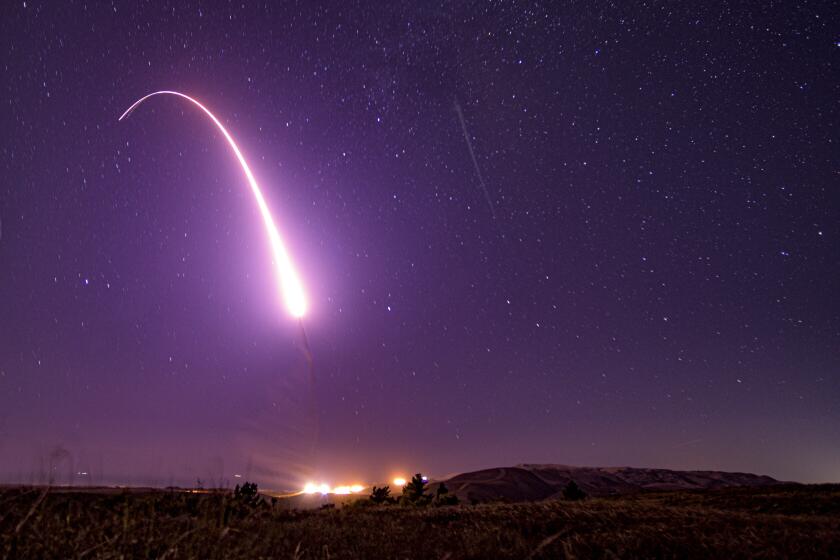History in the Making as Water Decisions Near
- Share via
In the next several months, local, state and federal officials will be making critical decisions that will affect California’s water supply for decades to come. The stakes are enormous. They include the long-term vitality of the California economy and of a priceless environment that has been severely damaged by giant water projects.
The central question: Will there be enough water to meet a host of increasing, competing demands? The answer is yes, if the resource managers and the water consumers are able to reconcile conflicting positions and reach decisions in the best interest of the entire state.
They must not fail. California finally is running out of surplus water and faces shortages in the next decade or two even in years of El Nino downpours. The state must develop a new ethic of efficient and creative use of what water it has and take action soon.
* We must develop a plan for living within California’s legal allocation of Colorado River water, 4.4 million acre-feet a year, of which 3.85 million goes to agriculture and the rest to urban Southern California for distribution by the Metropolitan Water District. The state routinely has been drawing as much as 5.2 million acre-feet from the Colorado River. But other states that share Colorado water--particularly Nevada and Arizona--are strong-arming the river’s federal water masters to make California limit its consumption.
* The giant agriculture districts using Colorado River water must agree on how much each is entitled to from their overall allocation. They also must show they are not wasting water.
* Metropolitan and the San Diego County Water Authority must settle a bitter dispute over San Diego’s plans to buy some 200,000 acre-feet a year from the Imperial Irrigation District and pipe it to San Diego through the MWD’s Colorado River Aqueduct. There are signs that an accommodation may be in the works.
* State and federal officials must forge ahead with an ambitious planning process known as CalFed to solve historical problems in the Sacramento-San Joaquin Delta, a source of drinking water for 22 million Californians and irrigation for 5 million acres of crops.
All these issues are interconnected. If there is failure in one, the others are impacted.
Most critical is the CalFed process in the delta, from which the giant federal and state water projects pump the majority of their supplies, including much of Southern California’s household water. In January, CalFed officials are scheduled to select one of three possible solutions to massive environmental problems created by years of pumping in the 700-square-mile estuary.
The CalFed process, begun in 1994, is the most ambitious effort ever undertaken to reconcile a host of problems related to delivery of safe drinking water and massive irrigation supplies. President Clinton reaffirmed his support earlier this month, promising, “We’re going to do it right.”
All the major water interests have been enthusiastic partners in CalFed. But as decision time nears, old animosities and suspicions have begun to re-emerge.
Some agriculture and urban water suppliers, with Gov. Pete Wilson’s support, claim they are being asked to sacrifice more water to the environment than they agreed to in 1994. The other side says that is not so. A disturbing sign is the decision of some San Joaquin Valley farmers last week to sue the Department of Interior over the use of federal project water for environmental needs.
Many officials and California business leaders believe the CalFed process is the last real opportunity to solve the state’s most vexing water supply problem. It must not be allowed to founder in more years of conflict, regional dispute and legal confrontation. No area of the state can afford that.
More to Read
Sign up for Essential California
The most important California stories and recommendations in your inbox every morning.
You may occasionally receive promotional content from the Los Angeles Times.










